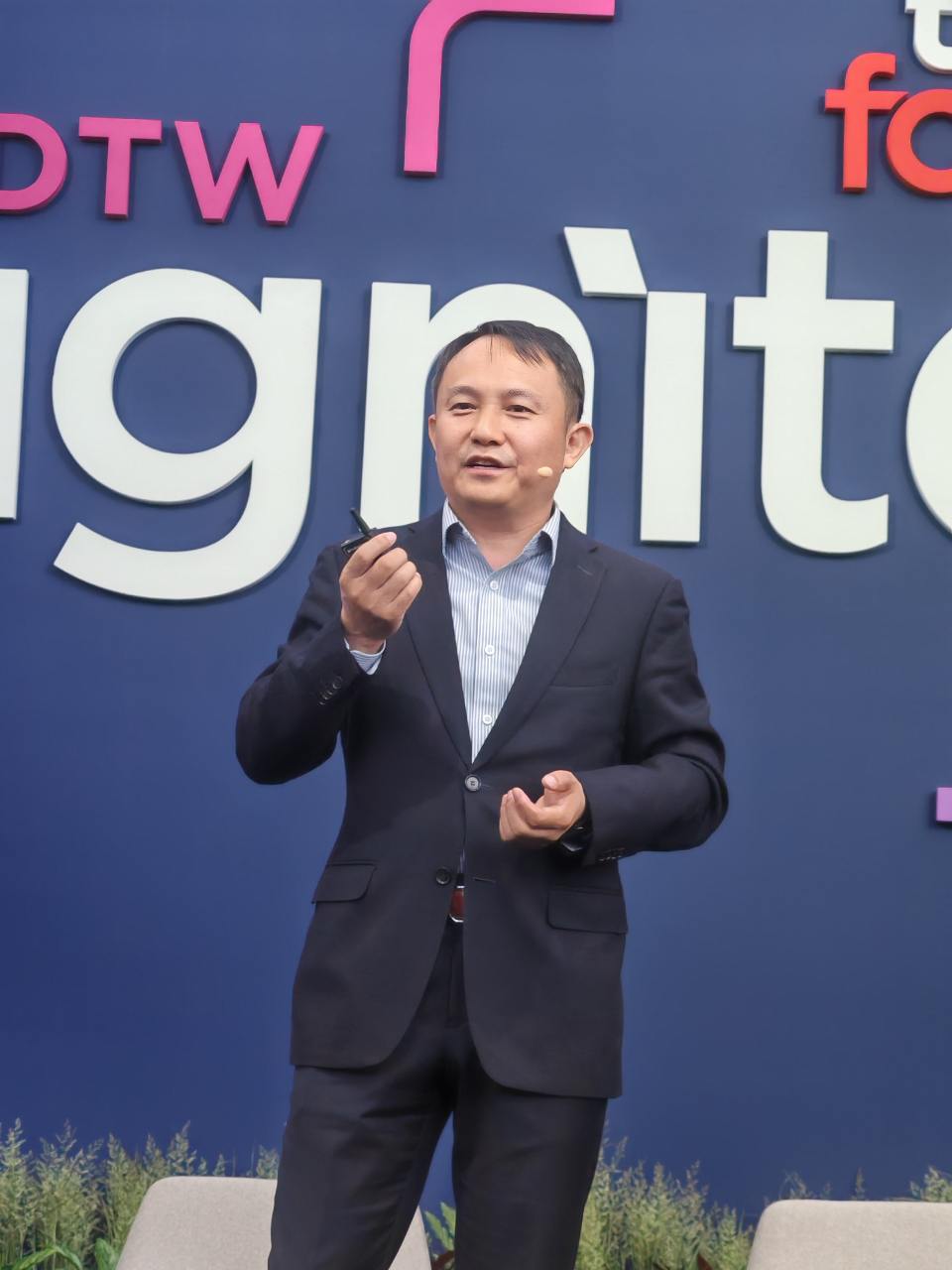Huawei Sam Wang: Accelerating AN Commercial Adoption by Referencing L4 Target Architecture
Jun 18, 2025
[Copenhagen, Denmark, June 18, 2025] During DTW 2025, Sam Wang , General Manager of Huawei Autonomous Driving Network (ADN) solution, attended the Autonomous Networks (AN) Architecture Forum hosted by TM Forum,and delivered a keynote speech titled "Architecting for Level 4 Network Autonomy”.

Sam Wang Spoke at the AN Architecture Forum
Since the industry launching the AN Level 4 (L4) journey at DTW 2024, Huawei, together with TM Forum and global partners, took the lead in implementing the three-layer and four-closed-loop target architecture, and actively promoted the implementation of L4 Solution Packages to accelerate operators' large-scale deployment of AN L4. After a year, the industry has made several key breakthroughs. Sam Wang said, "The AN L4 target architecture is jointly released by the industry partners, which has laid out an important basis for industry collaboration. Furthermore, the L4 Solution Package will enrich the AN Framework."
Based on the target architecture, Huawei continuously upgrades the ADN L4 solution in three high-value scenarios: fault management, network optimization, and complaint handling.
- L4 fault management is a typical cross-domain scenario. At the network layer, the fault management agent automatically identifies and locates faults. The service layer enables multi-network and multi-vendor correlation, service impact analysis, and multi-copilot collaboration. The network and service layers communicate with each other through incident interfaces to facilitate an automatic closed-loop process for fault handling.
- L4 RAN optimization is a typical cross-layer scenario. At the network layer, the optimization agent implements network awareness and a closed-loop optimization process to achieve predefined network performance indicators (KPIs). Meanwhile, the service layer concentrates on optimizing service quality indicators (KQIs), which rely on support from KPI optimization at the network layer. The interaction between the network layer and the service layer has evolved from traditional network configuration parameters to focus on network performance intents.
- L4 HBB complaints handling is a typical multi-system scenario. At the service layer, the agent is responsible for identifying customer complaints and coordinating with various systems, including the customer care system, billing system, and network layer systems, to determine the root causes of issues. The agent aims to respond quickly to customers and resolve non-network-related problems. Meanwhile, the network layer automatically identifies the root cause of network problems and syncs to the complaint handling agent at the service layer. This integration enables closed-loop management of network complaints.
Huawei has developed a scenario-based L4 ADN solution based on the architectural principles of single-domain autonomy and cross-domain collaboration. This solution encompasses single-domain fault handling, RAN performance optimization, and root cause analysis for HBB complaints. The solution features essential capabilities at the hardware layer, including intelligent modules, boards, and network elements. At the network layer, it also provides advanced capabilities such as agents and copilots. These capabilities are integrated into a service-layer system and have been commercially deployed on a large scale around the world, effectively assisting operators in building Highly Autonomous Networks.
Through a collaborative effort within the industry, TM Forum has released the first batch of L4 Solution Packages for high-value scenarios during DTW 2025. This release is expected to significantly boost the commercialization of AN L4. In his speech, Sam Wang emphasized the need for enhanced industry collaboration and contributions to improve the L4 Solution Packages. He urged stakeholders to use these packages as benchmarks to accelerate the commercial adoption and large-scale implementation of AN L4.